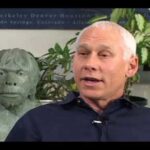From time to time we will post an article here that newcomers may not have come across.
This 1987 paper, “From evolution to behavior: Evolutionary psychology as the missing link”, is our second Forever Fresh post.
Without realizing it, many evolution-minded researchers were assuming that the mind was equipped with a goal–“maximize inclusive fitness”–and domain-general computational procedures that somehow figure out which behaviors will achieve this goal. This implies that people in the present, including in novel modern environments, are maximizing their fitness (it leads to questions like, “how are celibate monks actually maximizing their fitness?” and implies men should be lining up to donate at sperm banks). This 1987 paper argues, step-by-step, that a mind with this architecture–equipped only with this goal and domain-general computational procedures–could not have evolved, because it could not have produced behavior that tracked fitness ancestrally. Natural selection would have produced a mind that includes many domain-specific cognitive and motivational mechanisms (in addition to whatever domain-general ones exist), because this kind of architecture could have tracked fitness ancestrally (more specifically, it includes design features that could have promoted their own reproduction). Understanding the structure of these psychological adaptations is a key level of explanation in any evolutionary account of human behavior. That does not mean every evolution-minded researcher needs to study psychology–research in behavioral ecology is fundamental, and informs hypotheses about the design of the human mind, as does research on cultural variation. It means, instead, that there are pitfalls to ignoring psychology, both conceptually and when trying to understand patterns of human behavior across cultures.
The first in the series is by John Tooby. When he was president of the Human Behavior and Evolution Society in 1999, the HBES Newsletter had a feature, “View from the President’s Window.” John’s piece that fall was “The most testable concept in biology, Part 1“. It challenges the claim, then popular, that hypotheses about adaptations are untestable. Enjoy!






